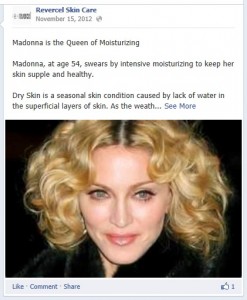Plastic Surgery and more on the rise due to social media Narcissism?

Thanks to the myriad of photos now being posted online, more people than ever are undergoing cosmetic procedures, according to a survey of plastic surgeons from only a few years ago. Almost a decade ago, requests for surgery as a result of social media photo sharing rose 31 percent in 2012, reported the American Academy of Facial Plastic and Reconstructive Surgery and continue to rise up to the present day.
“People especially want to look their best when hundreds, or even thousands, of viewers are looking at their photos – we hear it, too,” say Drs. Rick and Arlene Noodleman, the husband-and-wife physician team at Silicon Valley’s Age Defy Dermatology and Wellness.
“The good news is that there are now effective, minimally-invasive, low downtime approaches that reduce or even eliminate the appearance of sun-damaged, aging skin,” dermatologist Dr. Rick Noodleman says.
Both physicians emphasize that the key to youthful skin is both correction and prevention – and no, it’s never too late to start addressing the latter.
“Achieving beautiful, healthy skin is a process, not an event. It’s accomplished by working from the outside-in and the inside-out,” says preventive medicine specialist Dr. Arlene Noodleman. “The link between nutrition and the quality of your skin is also ‘written all over your face’.”

To ensure Facebook, Instagram and Google+ users look their best online, the Noodlemans offer this advice, based on more than 25 years of research and clinical experience: Work from the outside-in: “There are a number of corrective and preventive steps you can take to achieve a more youthful look,” says Dr. Rick Noodleman.
• For all skin types:
Protect your face from the sun. Use a sunscreen that protects against both UVA and UVB light, and wear a wide-brimmed hat.
• For older skin:
Exfoliant creams remove dead skin cells that don’t slough off as readily as when we were young. Prescription creams such as Avita, Avage, Renova and Retin-A have been shown to reduce wrinkles and “liver spots” due to sun exposure.
• For forehead wrinkles:
Injected Botox, a brand of botulinum toxin, partially immobilizes the muscles that form expression lines so the skin smoothes out, although some deep expression lines may not go away.
• For sun damage and acne scars:
Lasers can resurface facial skin by stripping away the outermost layers. Some “non-ablative”lasers also stimulate collagen formation, which helps smooth wrinkles.
And from the inside-out: “No matter what your skin type, healthy eating is an essential component of a good skin care regimen,” Dr. Arlene Noodleman says. “And, for some people, eating the wrong foods can actually cause problems.”
• A natural defense system:
Foods rich in antioxidants seem to have a protective effect on the skin. For instance, a study from back in 2007 by the American Society for Clinical Nutrition found that women ages 40 to 75 who consumed more vitamin C, an antioxidant, had fewer wrinkles. Antioxidant-rich foods include carrots and other yellow and orange fruits and vegetables; spinach and other green leafy vegetables; tomatoes; blueberries; peas and beans; fatty fish, and nuts. The study also found that women who consumed more linoleic acid—found in nuts and seeds—had a lower incidence of dry skin. Consider switching to a more Mediterranean-style diet
• Curbing acne flare-ups:
Acne-prone individuals should avoid dairy products, especially cow’s milk; processed foods high in white flour, such as white bread; and white rice and sugary foods and beverages such as candy bars and soda. Foods that cause ‘spikes’ in blood sugar levels can also trigger hormone production, which in turn can boost oil production.
• Psoriasis, rashes and other skin conditions:
Certain foods can cause hives and other reactions. Individual sensitivities vary, but common culprits are gluten, dairy, eggs and additives. People with psoriasis may see improvement by eating a low-glycemic load.
“Take a holistic approach to your skin’s health,” the Noodlemans say. “Your skin responds not only to what you put in and on your body, it also reflects your overall mental and physical health. Taking corrective and preventive measures that reduce sun-damage,increase exercise, promote healthy eating and decrease stress will help you look your best on social media.”
About Dr. Rick and Arlene Noodleman
Dr. Rick Noodleman, a board-certified, Stanford-trained dermatologist, is an expert in the medical and surgical management of skin disease, aging skin, and advanced cosmetic techniques. Dr. Arlene Noodleman, board-certified in preventive medicine and fellowship-trained in integrative medicine, is a healthy aging expert who focuses on the whole person and strategies that facilitate the body’s innate healing. Together, Drs. Noodleman created the Revercelcosmeceutical and neutraceutical product line. For the Silo, Ginny Grimsley


Leave a Reply
You must be logged in to post a comment.